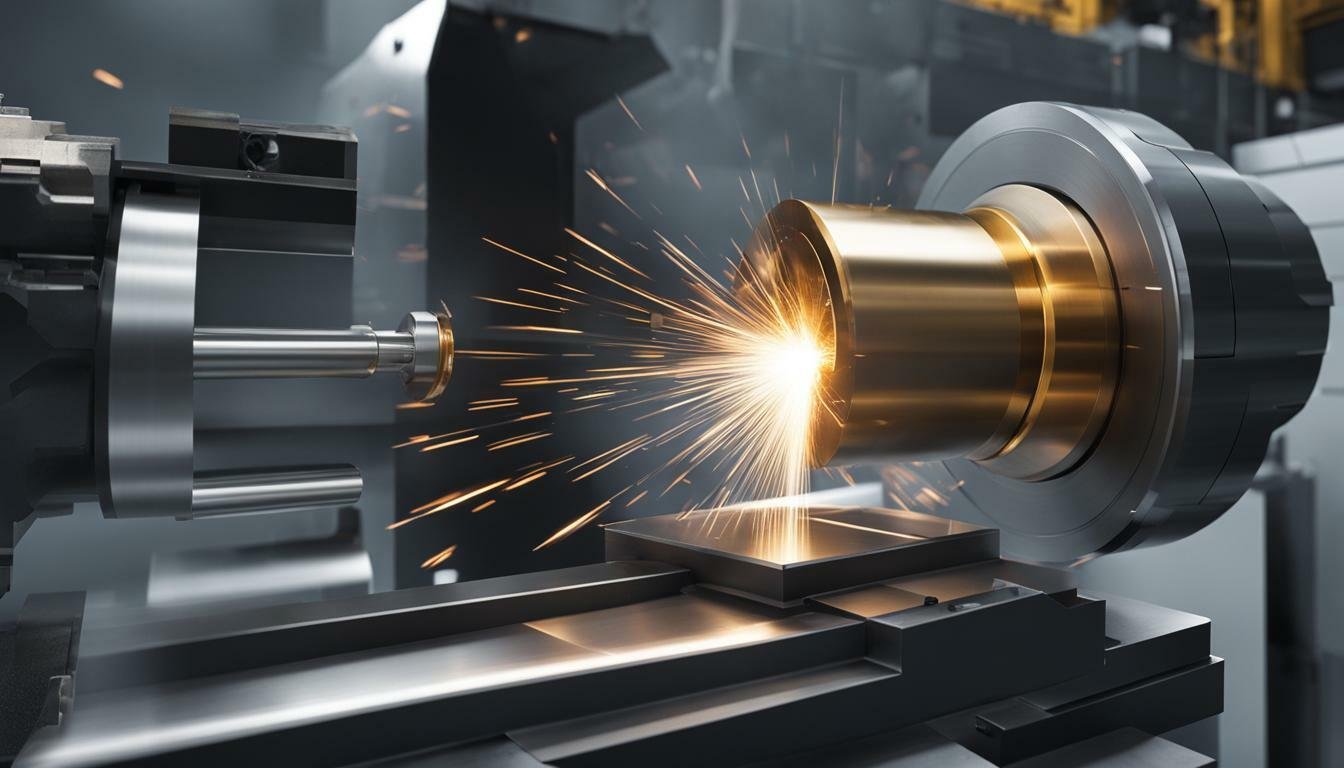In the world of CNC machining, turning is often considered a more cost-effective option compared to milling. CNC milling and turning are two common methods used in the machining industry, each with its own advantages and applications.
CNC milling utilizes a cutting tool that spins against a stationary workpiece, allowing for the creation of various shapes and parts such as fittings, enclosures, gears, and engine components. On the other hand, CNC turning involves rotating the workpiece against a cutting tool, making it ideal for producing rounded profiles and accurate holes. Parts like rollers, ball joints, nuts and bolts, and shafts are commonly manufactured using turning.
While CNC milling offers greater versatility in terms of shape creation, CNC turning often proves to be a more cost-effective and efficient option, especially when it comes to producing small, cylindrical parts. The specific design and requirements of a part are crucial factors in determining whether turning or milling is the better choice.
Key Takeaways:
- Turning is often considered a more cost-effective option compared to milling in CNC machining.
- CNC milling allows for the creation of various shapes and is suitable for parts like fittings, enclosures, gears, and engine components.
- CNC turning specializes in producing rounded profiles and accurate holes, making it ideal for parts like rollers, ball joints, nuts and bolts, and shafts.
- When it comes to small, cylindrical parts, turning is usually more efficient and cost-effective.
- The choice between turning and milling depends on the specific design and requirements of the part.
Understanding CNC Turning and Milling
Before we delve into the cost comparison, let’s first understand the basics of CNC turning and milling. These are two common methods of CNC machining, each with its own advantages and applications.
CNC milling utilizes a cutting tool that spins against a stationary workpiece. This process is highly versatile and can create various shapes, making it suitable for parts like fittings, enclosures, gears, and engine parts. With CNC milling, you have the flexibility to produce complex designs and intricate details.
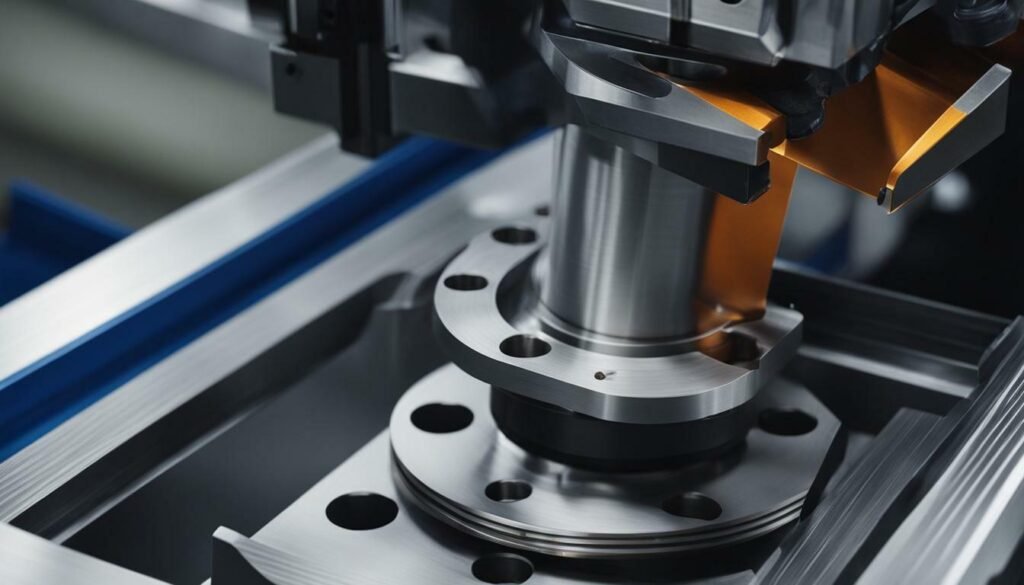
CNC turning, on the other hand, involves rotating the workpiece against a cutting tool. It is particularly beneficial for producing rounded profiles and accurate holes. Parts like rollers, ball joints, nuts and bolts, and shafts are commonly manufactured using CNC turning. While it may not offer the same level of versatility as CNC milling, CNC turning offers speed and efficiency when it comes to producing small, cylindrical parts.
It’s important to consider the specific design and requirements of your part when choosing between CNC turning and milling. While milling may be more versatile, turning can provide a cost-effective and efficient solution for certain types of parts. In the next section, we will explore the cost comparison between these two processes to give you a better understanding of their financial implications.
CNC Milling: Versatility and Applications
CNC milling is a highly versatile machining process that can be used to create various shapes and components for a wide range of applications. With its ability to cut material in multiple axes, CNC milling offers exceptional flexibility and precision in manufacturing. Whether you need intricate fittings, sturdy enclosures, precision gears, or vital engine parts, CNC milling can deliver the desired results.
One of the key advantages of CNC milling is its ability to work with different materials, including metals, plastics, and composites. This makes it suitable for a diverse range of industries, from automotive and aerospace to electronics and healthcare. The process involves using a rotating cutting tool, known as the milling cutter, which removes material from the workpiece to create the desired shape or form.
When it comes to complex components or parts that require intricate detailing, CNC milling truly excels. Its precision and repeatability make it ideal for producing highly accurate and intricate designs. The computer-controlled automation ensures consistent and reliable results, eliminating the risk of human error.

From creating complex shapes and contours to machining threads and pockets, CNC milling offers unmatched versatility. The process allows for the production of components with tight tolerances, ensuring the perfect fit and function. With the ability to work on both 2D and 3D designs, CNC milling opens up a world of possibilities for design engineers and manufacturers.
So, whether you’re looking to create custom enclosures for electronic devices or intricate gears for machinery, CNC milling provides the versatility and precision required to bring your ideas to life. Its ability to work with a wide range of materials, produce intricate designs, and deliver consistent results makes it a go-to choice for many industries.
CNC Turning: Rounded Profiles and Accurate Holes
Unlike milling, CNC turning excels at producing rounded profiles and precise holes, making it the preferred choice for certain types of parts. This process involves rotating the workpiece against a cutting tool, resulting in the creation of smooth curves and accurately drilled holes. The ability of CNC turning to create rounded profiles makes it ideal for producing parts like rollers, ball joints, nuts and bolts, and shafts.
One of the key advantages of CNC turning is its capability to produce accurate holes. Whether it’s a small or large diameter, CNC turning ensures that the holes are precisely drilled to meet the desired specifications. This level of accuracy is crucial in applications where components need to fit together seamlessly, such as in assembly operations for machinery or equipment.
Furthermore, CNC turning offers exceptional efficiency in the production of rounded profiles and accurate holes for various industries. Its ability to create smooth curves and precise holes in a single operation saves time and eliminates the need for additional machining processes. This not only speeds up production but also reduces costs, making CNC turning a cost-effective choice for manufacturing small, cylindrical parts.
Example Image
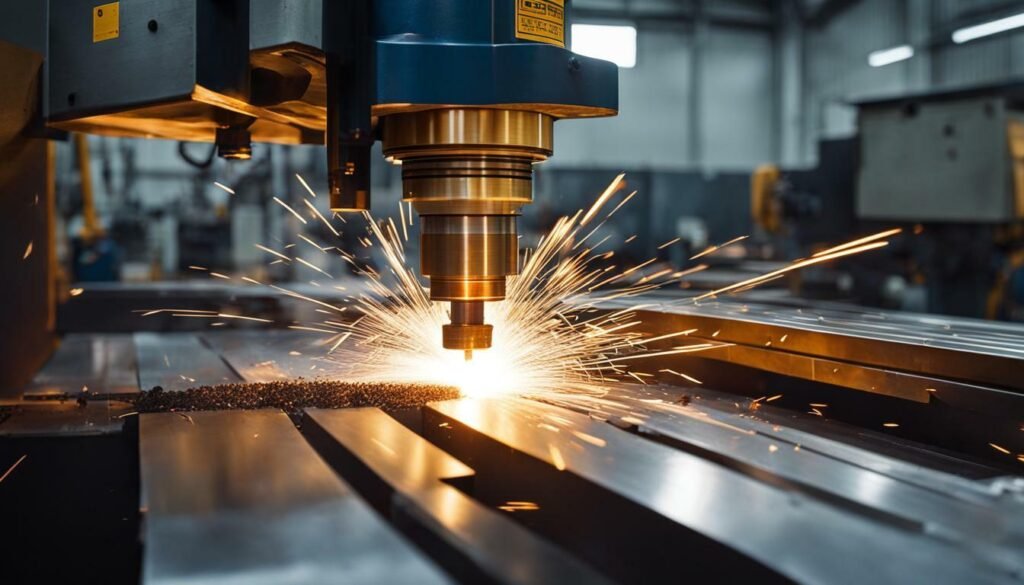
In summary, CNC turning is a highly valuable machining method for producing rounded profiles and accurate holes. While CNC milling provides versatility in shaping various components, CNC turning excels in specific applications where rounded profiles and precise holes are paramount. By leveraging the advantages of CNC turning, manufacturers can achieve cost-effective production of small, cylindrical parts while ensuring the highest level of quality and accuracy.
Cost Comparison: Turning vs Milling
When it comes to cost, turning has a clear advantage over milling in many scenarios. With turning, the process is simpler and requires fewer tool changes, resulting in reduced setup time and lower tooling costs. This is especially beneficial for small, cylindrical parts where turning is the preferred method.
In addition to lower setup costs, turning also offers faster cycle times, increasing overall efficiency and reducing manufacturing costs. The process of rotating the workpiece against a cutting tool allows for quicker material removal compared to milling, resulting in shorter machining times and ultimately lower production costs.
Furthermore, the cost of raw materials can be significantly reduced when choosing turning over milling. Turning typically produces less waste material due to its continuous chip removal, resulting in higher material utilization and lower material costs. This is particularly advantageous when working with expensive or exotic materials.
Cost Comparison Turning vs Milling
| Cost Factors | Turning | Milling |
|---|---|---|
| Setup Time | Shorter | Longer |
| Tooling Costs | Lower | Higher |
| Cycle Times | Faster | Slower |
| Material Waste | Less | More |
| Material Costs | Lower | Higher |
Overall, when considering cost, turning often emerges as the more cost-effective option. However, it is important to note that the choice between turning and milling ultimately depends on the specific part design and requirements. While turning may be cheaper for certain types of parts, milling offers greater versatility and is better suited for more complex shapes and designs.
Regardless of the chosen method, CNC machining continues to be a preferred choice for precision manufacturing, offering high accuracy and repeatability. Whether you opt for turning or milling, it is crucial to work with a skilled CNC machinist who can optimize the process to achieve the desired results while keeping costs under control.

Turning has a higher level of efficiency when it comes to machining small, cylindrical parts. The precision and speed of CNC turning make it an ideal choice for creating these types of components. With the rotation of the workpiece against a cutting tool, turning can produce accurate holes and rounded profiles with ease.
When it comes to small parts, such as rollers, ball joints, nuts and bolts, and shafts, turning offers distinct advantages over milling. The simplicity of the turning process allows for faster production times, resulting in cost savings for manufacturers. Additionally, the versatility of turning makes it suitable for various materials, including metals, plastics, and composites.
To better understand the efficiency of turning in machining small, cylindrical parts, consider the following example:
| Process | Turning | Milling |
|---|---|---|
| Setup Time | 10 minutes | 20 minutes |
| Machining Time | 5 minutes | 10 minutes |
| Total Time | 15 minutes | 30 minutes |
In this example, turning requires half the setup and machining time compared to milling, resulting in a significant reduction in overall production time. This efficiency translates into cost savings for manufacturers, as they can produce more small, cylindrical parts within the same timeframe.
Overall, when it comes to machining small, cylindrical parts, turning offers a cost-effective and time-efficient solution. Its ability to produce accurate holes and rounded profiles makes it the preferred choice for manufacturers looking to optimize their production processes.
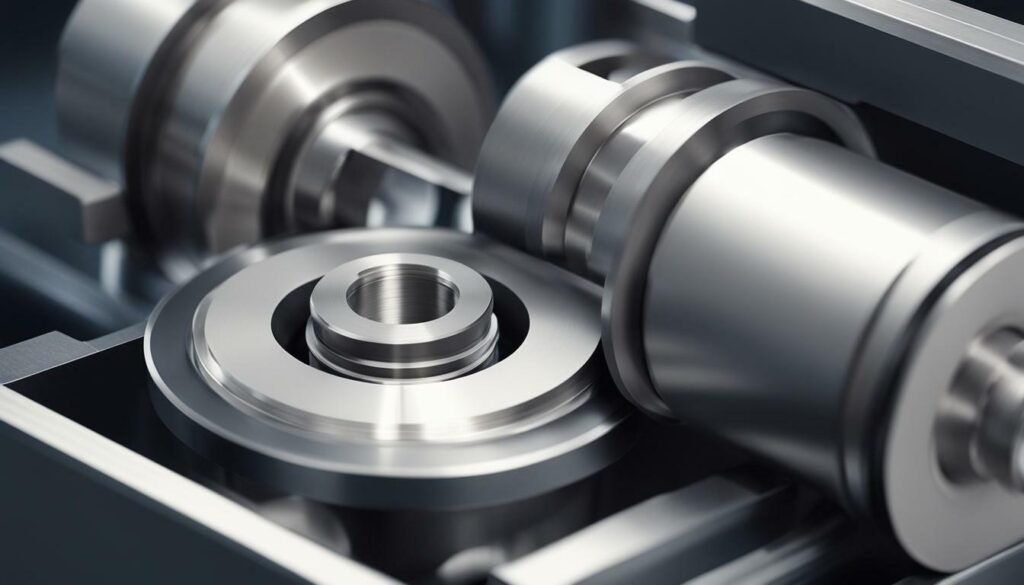
While both turning and milling have their advantages, turning offers several distinct benefits that make it a favorable option in certain situations. One of the key advantages of turning is its ability to produce rounded profiles and accurate holes. This makes it the preferred method for creating parts like rollers, ball joints, nuts and bolts, and shafts. By rotating the workpiece against a cutting tool, turning ensures precise and consistent results, which is crucial for these types of components.
Another benefit of turning is its cost-effectiveness compared to milling. Turning is often faster and requires fewer machining steps, resulting in lower production costs. This makes it an attractive choice, especially when dealing with small, cylindrical parts where turning excels. The efficiency of turning in producing these specific parts translates to reduced labor and material costs, making it a cost-effective option for manufacturers.
In addition to cost savings, turning also offers improved material utilization. With milling, excess material is often removed to achieve the desired shape, leading to more waste. In contrast, turning is a more precise method that removes material only where necessary, resulting in less material wastage. This not only reduces costs but is also more environmentally friendly, aligning with the growing trend of sustainable manufacturing practices.
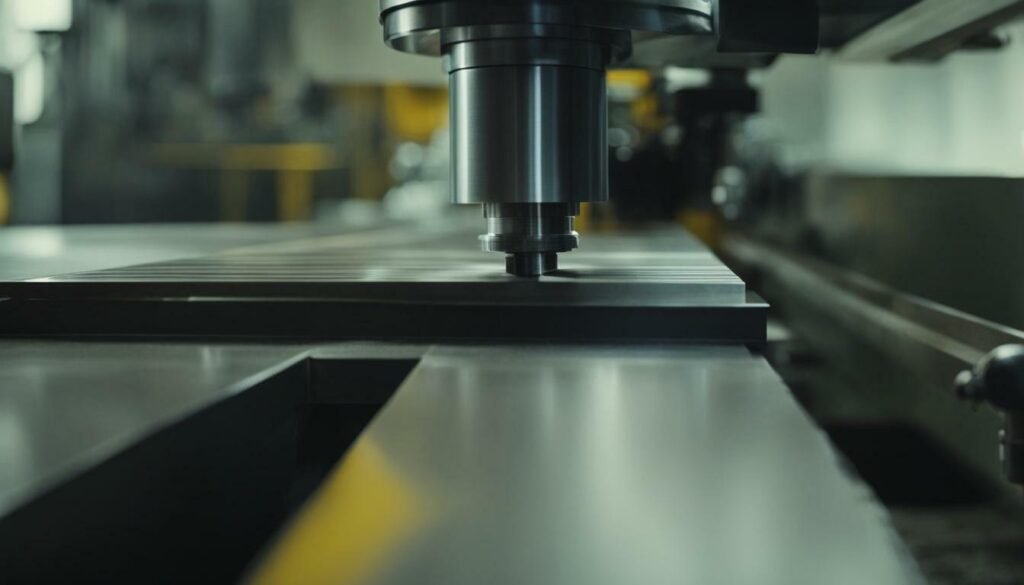
In summary, turning provides several advantages over milling, making it a preferred choice in certain scenarios. The ability to create rounded profiles and accurate holes, along with cost savings and improved material utilization, makes turning a cost-effective option for manufacturers. While CNC milling offers more versatility in terms of shapes and applications, turning shines in producing small, cylindrical parts efficiently and economically.
Factors Influencing the Choice between Turning and Milling
The choice between turning and milling depends on a range of factors, including part design and specific requirements. Whether you opt for CNC turning or CNC milling, understanding these factors is crucial in determining the most suitable machining method for your project.
Part Design: The complexity and geometry of the part play a significant role in the decision-making process. CNC milling offers versatility, allowing for the creation of intricate shapes and contours. On the other hand, CNC turning excels in producing rounded profiles and accurate holes. Depending on your part’s design requirements, one method may be more suitable than the other.
Specific Requirements: Consider the specific needs of your project. If you require smooth finishes and tight tolerances, CNC milling may be the ideal choice. It offers the ability to achieve high precision and surface quality. Alternatively, if cost and efficiency are top priorities, CNC turning can be a more economical option, especially for small, cylindrical parts.
Table: Summary of Factors Influencing the Choice between Turning and Milling
| Factors | Turning | Milling |
|---|---|---|
| Part Complexity | Simple to Moderate | Moderate to Complex |
| Geometry | Rounded Profiles, Accurate Holes | Versatile; Intricate Shapes, Contours |
| Surface Finish | Good | Excellent |
| Tolerances | Adequate | High |
| Cost | Lower | Higher |
| Efficiency | Good for Small, Cylindrical Parts | Varies Based on Part Complexity |
By carefully considering part design and specific requirements, you can make an informed decision on whether turning or milling is best suited for your project. Remember, each method comes with its own advantages and limitations, so it’s crucial to assess your needs thoroughly. Choosing the right machining method will result in optimal cost-effectiveness and ensure the successful completion of your project.
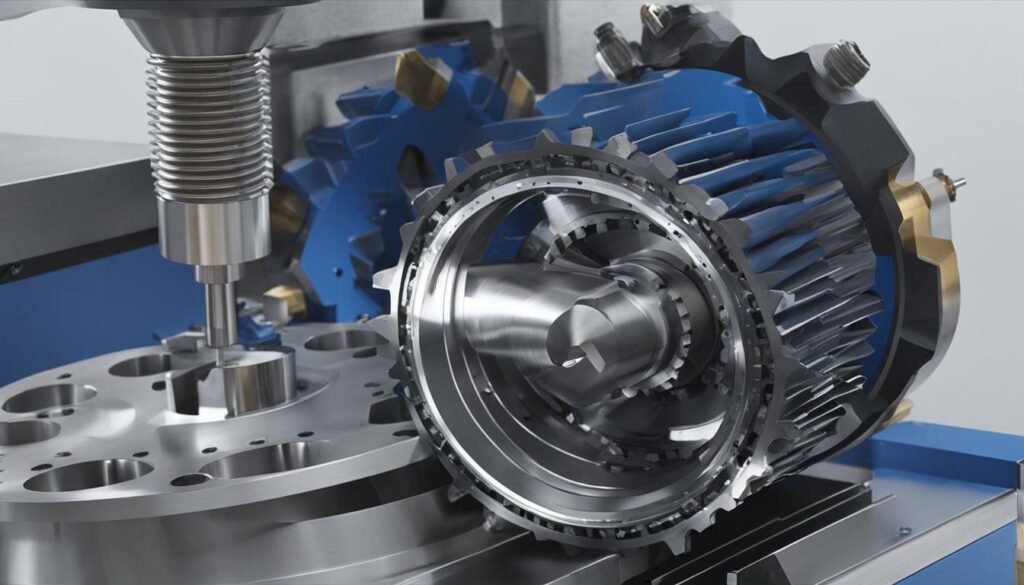
When it comes to cost-effectiveness, turning proves to be a viable option over milling in many machining scenarios. Turning and milling are two common methods of CNC machining, with each process offering its own advantages.
CNC milling is known for its versatility, allowing for the creation of various shapes and the production of parts like fittings, enclosures, gears, and engine parts. On the other hand, CNC turning excels in producing rounded profiles and accurate holes, making it ideal for parts such as rollers, ball joints, nuts and bolts, and shafts.
While CNC milling offers more versatility, CNC turning often takes the lead in terms of cost and efficiency, especially when it comes to producing small, cylindrical parts. The process of turning proves to be quicker and more cost-effective in these cases.
Ultimately, the choice between turning and milling depends on the specific part design and requirements. By considering factors such as shape, accuracy, and cost, manufacturers can determine which machining process is best suited for their needs.
FAQ
Is turning cheaper than milling?
Yes, turning is generally considered to be cheaper than milling due to factors such as tooling costs and setup time.
What are the advantages of turning over milling?
Turning offers advantages such as lower costs, faster production times for small cylindrical parts, and the ability to create rounded profiles and accurate holes.
How does the cost compare between turning and milling?
Turning is often cheaper than milling, especially for small, cylindrical parts. However, the cost difference can vary depending on factors such as part complexity and volume.
What types of parts are suitable for CNC milling?
CNC milling is versatile and can be used to create various shapes. It is suitable for parts such as fittings, enclosures, gears, and engine parts.
What types of parts are suitable for CNC turning?
CNC turning is ideal for producing rounded profiles and accurate holes. It is suitable for parts such as rollers, ball joints, nuts and bolts, and shafts.
Why is turning more efficient for small, cylindrical parts?
Turning is more efficient for small, cylindrical parts because it requires less tooling and setup time compared to milling. It can achieve faster production times for these types of parts.
What are the benefits of choosing turning over milling?
Some benefits of choosing turning over milling include lower costs, faster production times for small cylindrical parts, and the ability to create rounded profiles and accurate holes.
What factors should be considered when choosing between turning and milling?
When choosing between turning and milling, factors such as part design and specific requirements should be considered. Each process has its own advantages and limitations.
Why is turning often a cost-effective option?
Turning is often a cost-effective option because it generally requires less tooling and setup time compared to milling, resulting in lower production costs.
What Are the Benefits of Choosing a Carbide 3D Shapeoko 4 over the Pro for Turning?
The carbide 3d shapeoko 4 vs pro debate centers on the benefits of choosing the former for turning. With the Shapeoko 4, you get enhanced performance and precision, thanks to its rigid design and upgraded features. Its ability to handle larger projects makes it an ideal choice for turning enthusiasts looking for more versatility.
